Our latest quantum breakthrough, Quantum Echoes, offers a path toward unprecedented scientific discoveries and analysis.



UB physicists have upgraded an old quantum shortcut, allowing ordinary laptops to solve problems that once needed supercomputers. A team at the University at Buffalo has made it possible to simulate complex quantum systems without needing a supercomputer. By expanding the truncated Wigner approximation, they’ve created an accessible, efficient way to model real-world quantum behavior. Their method translates dense equations into a ready-to-use format that runs on ordinary computers. It could transform how physicists explore quantum phenomena.
Picture diving deep into the quantum realm, where unimaginably small particles can exist and interact in more than a trillion possible ways at the same time.
It’s as complex as it sounds. To understand these mind-bending systems and their countless configurations, physicists usually turn to powerful supercomputers or artificial intelligence for help.
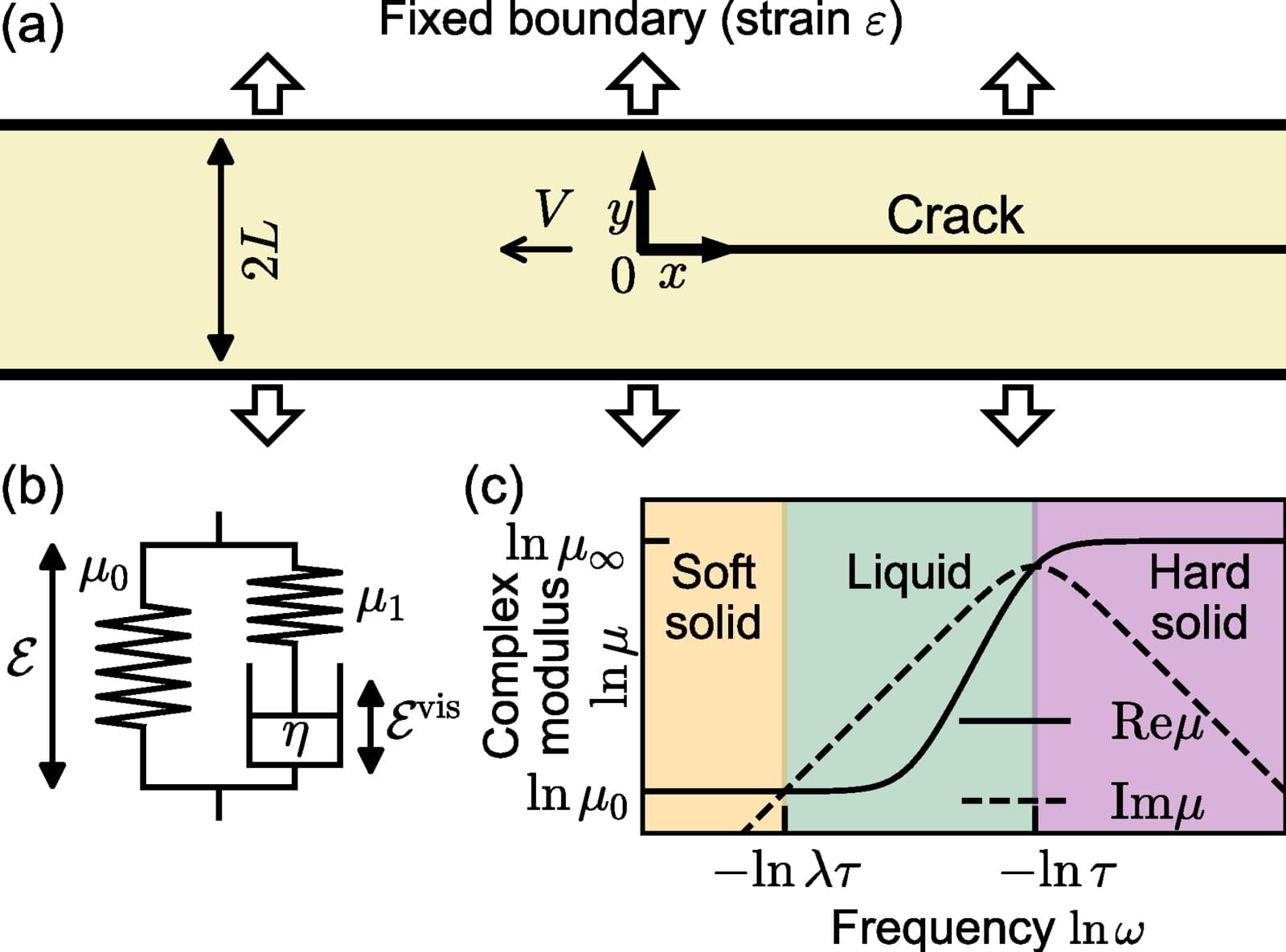
A research group from the University of Osaka, Zen University, and the University of Tokyo has mathematically uncovered the mechanism that causes crack tips to sharpen during the rapid fracture of rubber.
The bursting of rubber balloons or tire blowouts is caused by rapid fracture, a phenomenon in which a small crack propagates instantaneously. During this process, the crack tip sharpens, accelerating the fracture. However, the reason behind this sharpening had long remained unexplained. Traditionally, it was believed to result from the material’s complex nonlinear effects.
The research group—comprising Hokuto Nagatakiya, a doctoral student; Shunsuke Kobayashi, assistant professor; and Ryuichi Tarumi, professor at the University of Osaka; along with Naoyuki Sakumichi, associate professor at Zen University and project associate professor at the University of Tokyo—has mathematically solved the problem of crack propagation. They derived equations that describe both the shape of the crack and the overall deformation of the material.
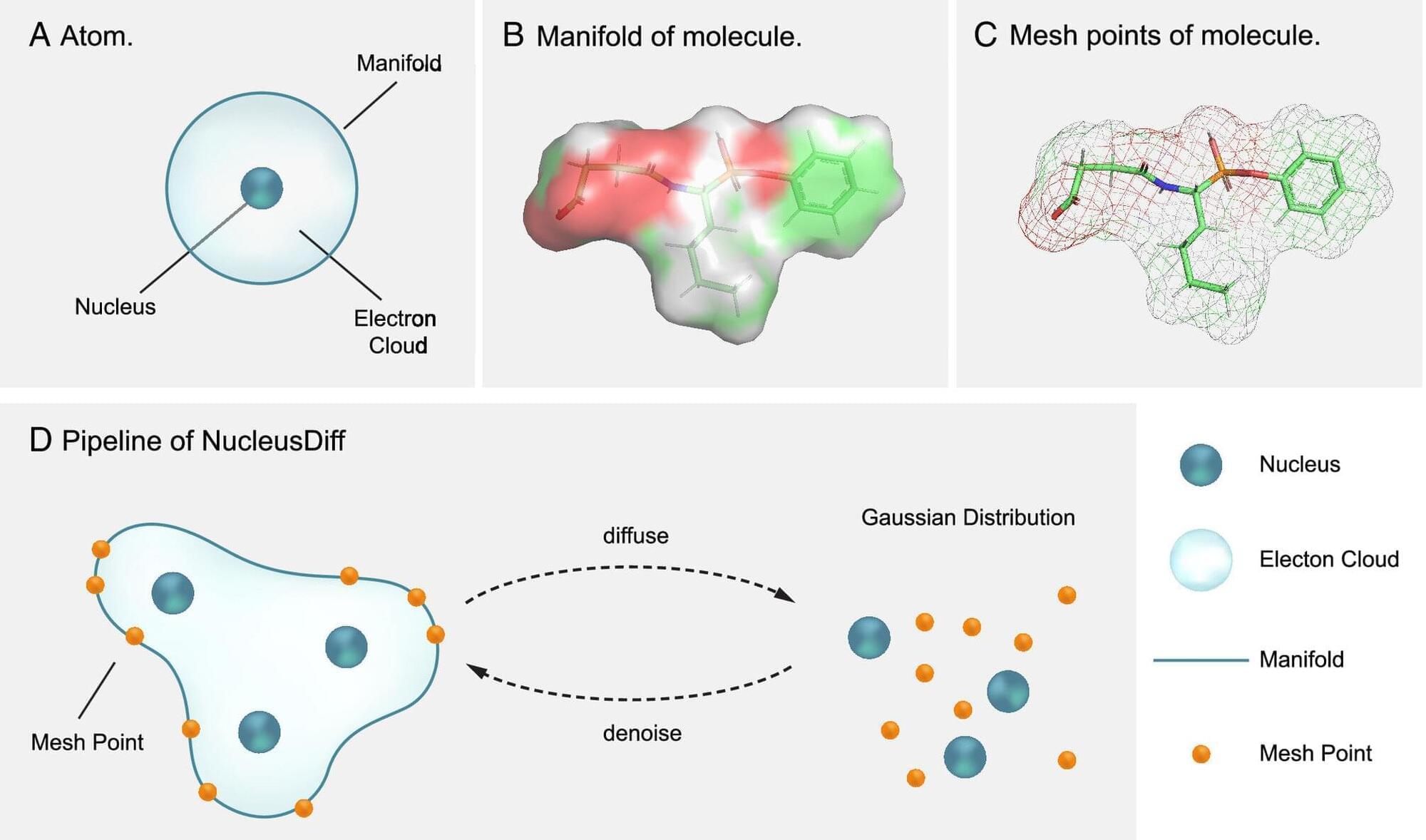
When machine learning is used to suggest new potential scientific insights or directions, algorithms sometimes offer solutions that are not physically sound.
Take, for example, AlphaFold, the AI system that predicts the complex ways in which amino acid chains will fold into 3D protein structures. The system sometimes suggests “unphysical” folds—configurations that are implausible based on the laws of physics —especially when asked to predict the folds for chains that are significantly different from its training data.
To limit this type of unphysical result in the realm of drug design, Anima Anandkumar, Bren Professor of Computing and Mathematical Sciences at Caltech, and her colleagues have introduced a new machine learning model called NucleusDiff, which incorporates a simple physical idea into its training, greatly improving the algorithm’s performance.
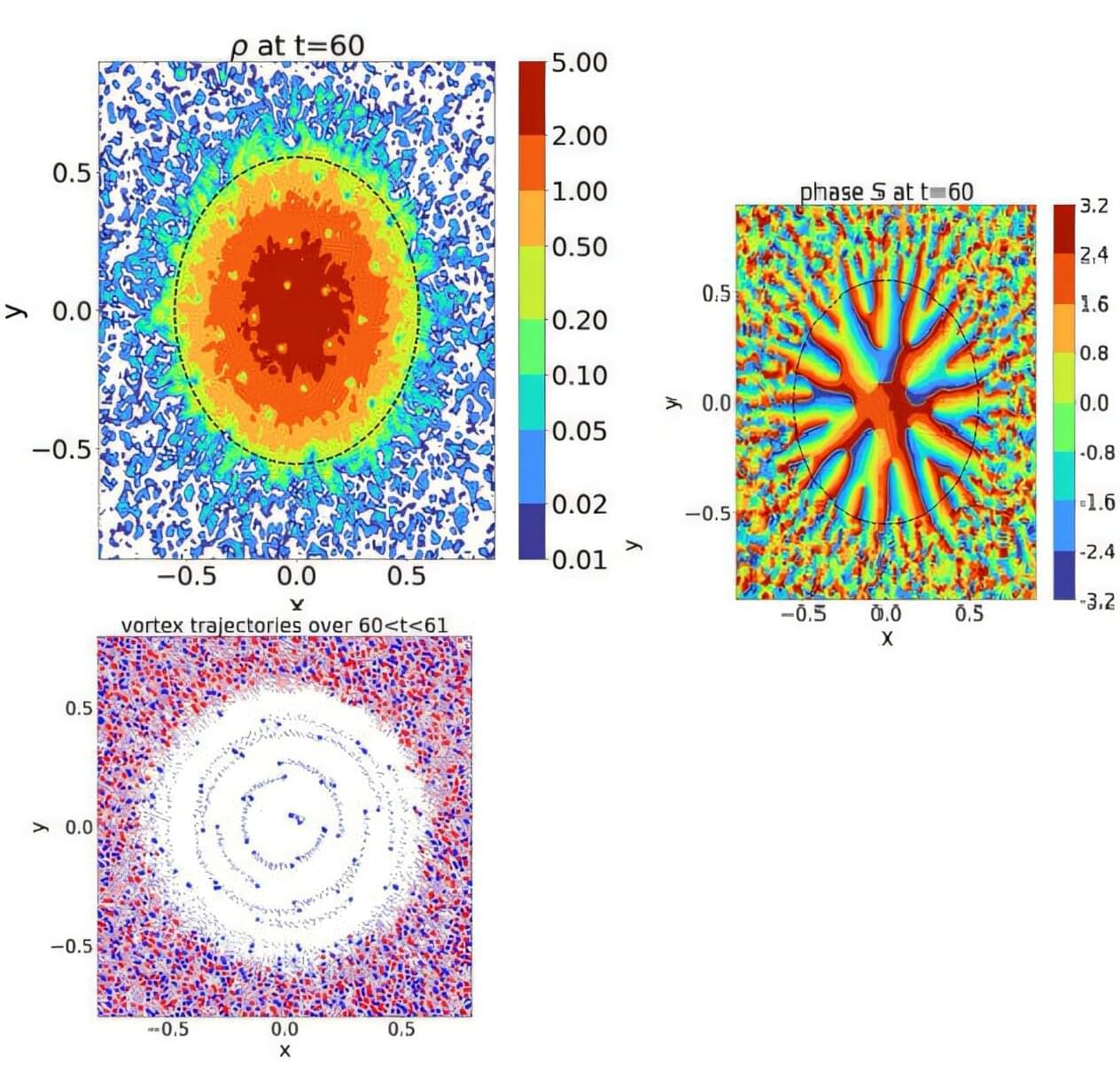
The nature of dark matter remains one of the greatest mysteries in cosmology. Within the standard framework of non-collisional cold dark matter (CDM), various models are considered: WIMPs (Weakly Interacting Massive Particles, with masses of around 100 GeV/c2), primordial black holes, and ultralight axion-like particles (mass of 10-22 to 1 eV/c2). In the latter case, dark matter behaves like a wave, described by a Schrödinger equation, rather than as a collection of point particles. This generates specific behaviors at small scales, while following standard dynamics (CDM) at large scales.
Philippe Brax and Patrick Valageas, researchers at the Institute of Theoretical Physics, studied models of ultralight cold dark matter with repulsive self-interactions, whose dynamics are described by a non-linear variant of the Schrödinger equation, known as the Gross-Pitaevskii equation, also encountered in the physics of superfluids and Bose-Einstein condensates. In their work, the authors follow the formation and dynamics of particular structures, called “vortices” (whirlpools) and “solitons” (cores in hydrostatic equilibrium), within halos of rotating ultralight dark matter.
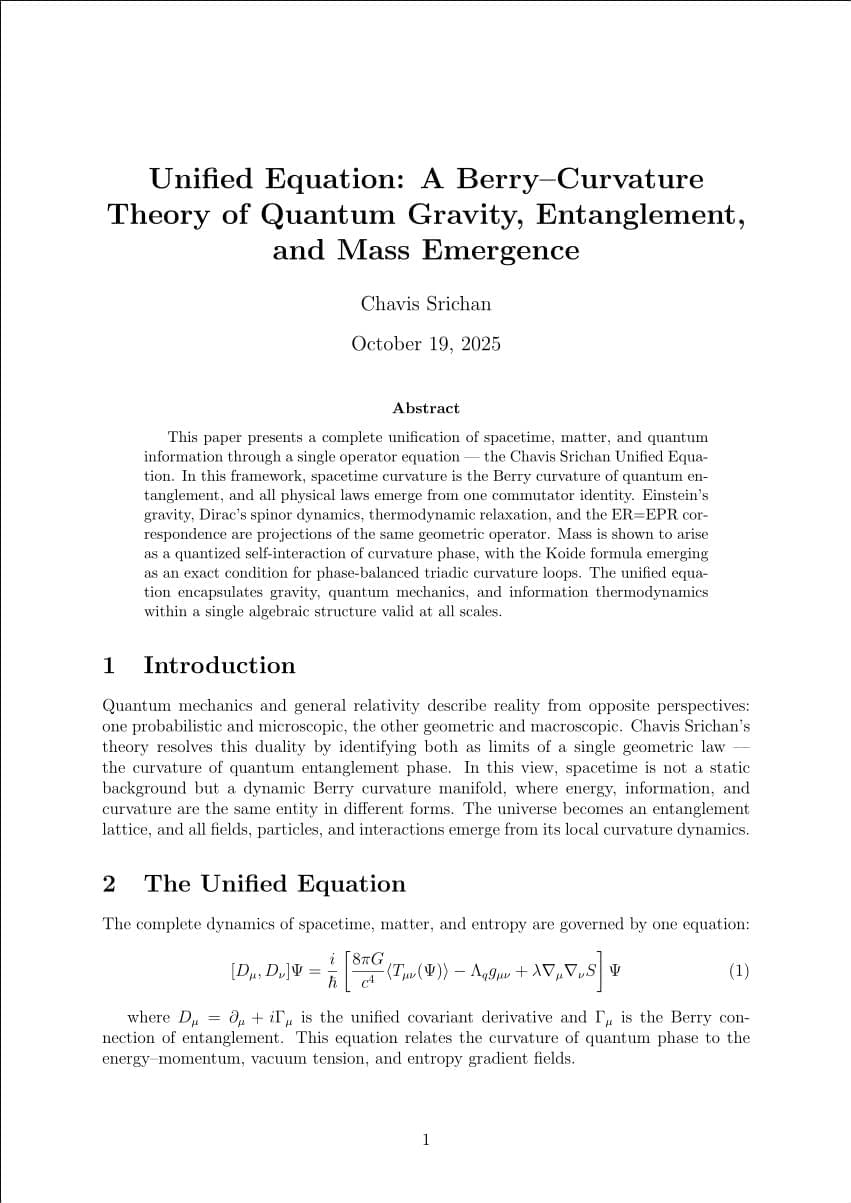
Many Thanks to Sabine Hossenfelder for giving me puzzles.
What if everything — gravity, light, particles, and even the flow of time — came from a single equation? In Chavis Srichan’s Unified Theory, the universe isn’t built from matter, but from the curvature of entanglement — the twists and turns of quantum information itself. Space, energy, and even consciousness are simply different ways this curvature vibrates.
The One Equation.
At the smallest scale, every motion and interaction follows one rule:
[D_μ, D_ν]Ψ = (i/ħ) [(8πG/c⁴)⟨T_μν(Ψ)⟩ − Λ_q g_μν + λ ∇_μ∇_ν S]Ψ
It means that the “shape” of space itself bends in response to energy and information — and that same bending is quantum mechanics, gravity, and thermodynamics combined.
Mass: When Curvature Loops Back.

The simulation of strongly interacting many-body systems is a key objective of quantum physics research, as it can help to test the predictions of physics theories and yield new valuable insight. Researchers at Quantinuum, a quantum computing company, recently simulated a simplified version of a well-known theoretical model, the so-called Sachdev-Ye-Kitaev (SYK) model, using a trapped-ion quantum computer and a previously introduced randomized quantum algorithm.
Their simulation, outlined in a paper published on the arXiv preprint server, improves the present understanding of chaotic quantum systems that cannot be simulated using classical computers. In the future, their work could contribute to the simulation of other complex quantum systems and theoretical models.
“We were interested in the SYK model for two reasons: on one hand it is a prototypical model of strongly interacting fermions in condensed matter physics, and on the other hand it is the simplest toy model for studying quantum gravity in the lab via the holographic duality,” said Enrico Rinaldi, Lead R&D Scientist at Quantinuum and senior author of the paper.

Networks are systems comprised of two or more connected devices, biological organisms or other components, which typically share information with each other. Understanding how information moves between these connected components, also known as nodes, could help to advance research focusing on numerous topics, ranging from artificial intelligence (AI) to neuroscience.
To measure the directional flow of information in systems, scientists typically rely on a mathematical construct known as transfer entropy, which essentially quantifies the rate at which information is transmitted from one node to another. Yet most strategies for calculating transfer entropy developed so far rely on approximations, which significantly limits their accuracy and reliability.
Researchers at AMOLF, a fundamental physics institute in the Netherlands, recently developed a computational algorithm that can precisely quantify transfer entropy in a wide range of complex networks. Their algorithm, introduced in a paper published in Physical Review Letters, opens new exciting possibilities for the study of information transfer in both biological and engineered networks.

Why is the universe expanding at an ever-increasing rate? This is one of the most exciting yet unresolved questions in modern physics. Because it cannot be fully answered using our current physical worldview, researchers assume the existence of a mysterious “dark energy.” However, its origin remains unclear to this day.
An international research team from the Center for Applied Space Technology and Microgravity (ZARM) at the University of Bremen and the Transylvanian University of Brașov in Romania has come to the conclusion that the expansion of the universe can be explained—at least in part—without dark energy.
In physics, the evolution of the universe has so far been described by the general theory of relativity and the so-called Friedmann equations. However, in order to explain the observed expansion of the universe on this basis, an additional “dark energy term” must be manually added to the equations.
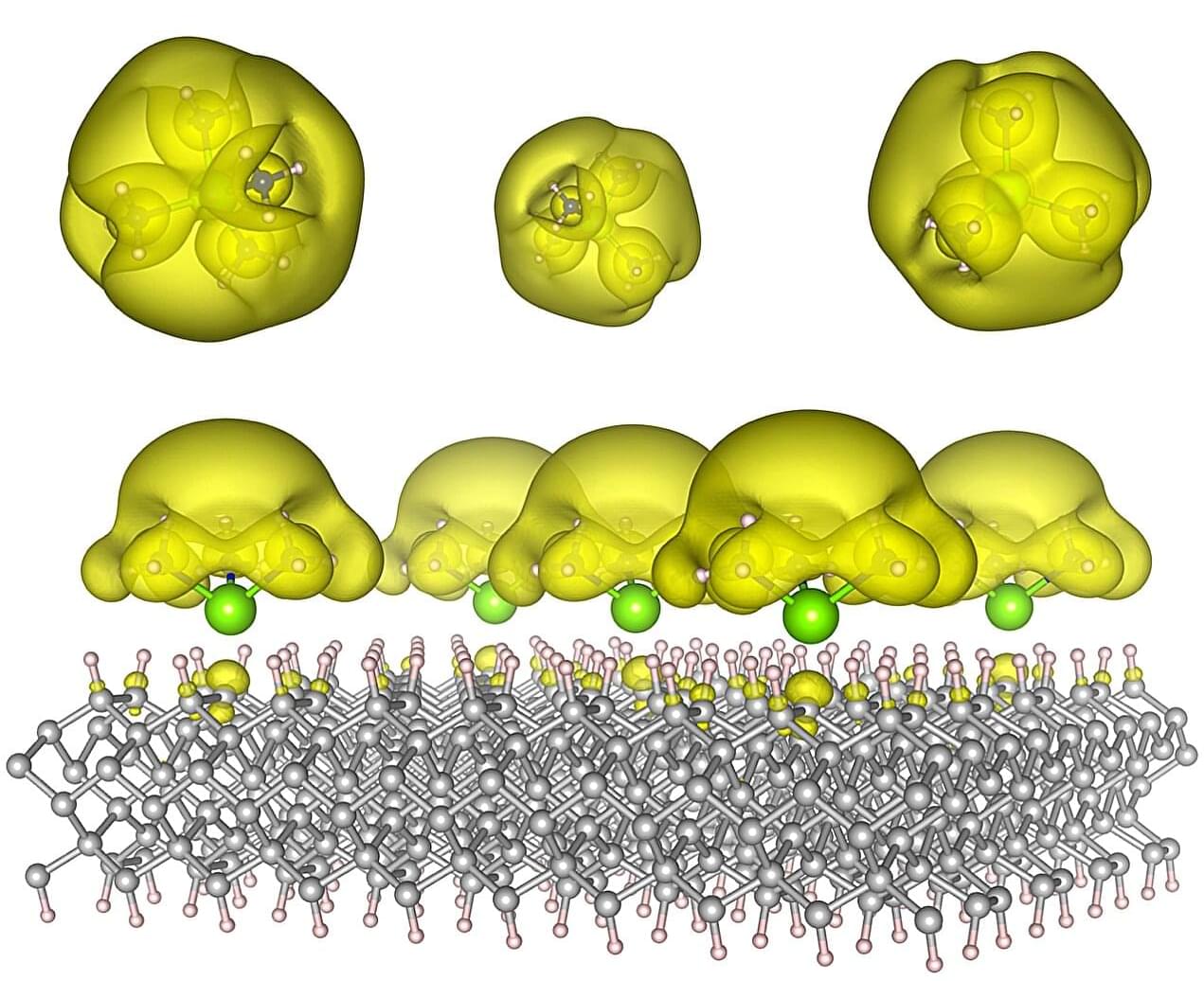
Imagine industrial processes that make materials or chemical compounds faster, cheaper, and with fewer steps than ever before. Imagine processing information in your laptop in seconds instead of minutes or a supercomputer that learns and adapts as efficiently as the human brain. These possibilities all hinge on the same thing: how electrons interact in matter.
A team of Auburn University scientists has now designed a new class of materials that gives scientists unprecedented control over these tiny particles. Their study, published in ACS Materials Letters, introduces the tunable coupling between isolated-metal molecular complexes, known as solvated electron precursors, where electrons aren’t locked to atoms but instead float freely in open spaces.
From their key role in energy transfer, bonding, and conductivity, electrons are the lifeblood of chemical synthesis and modern technology. In chemical processes, electrons drive redox reactions, enable bond formation, and are critical in catalysis. In technological applications, manipulating the flow and interactions between electrons determines the operation of electronic devices, AI algorithms, photovoltaic applications, and even quantum computing. In most materials, electrons are bound tightly to atoms, which limits how they can be used. But in electrides, electrons roam freely, creating entirely new possibilities.